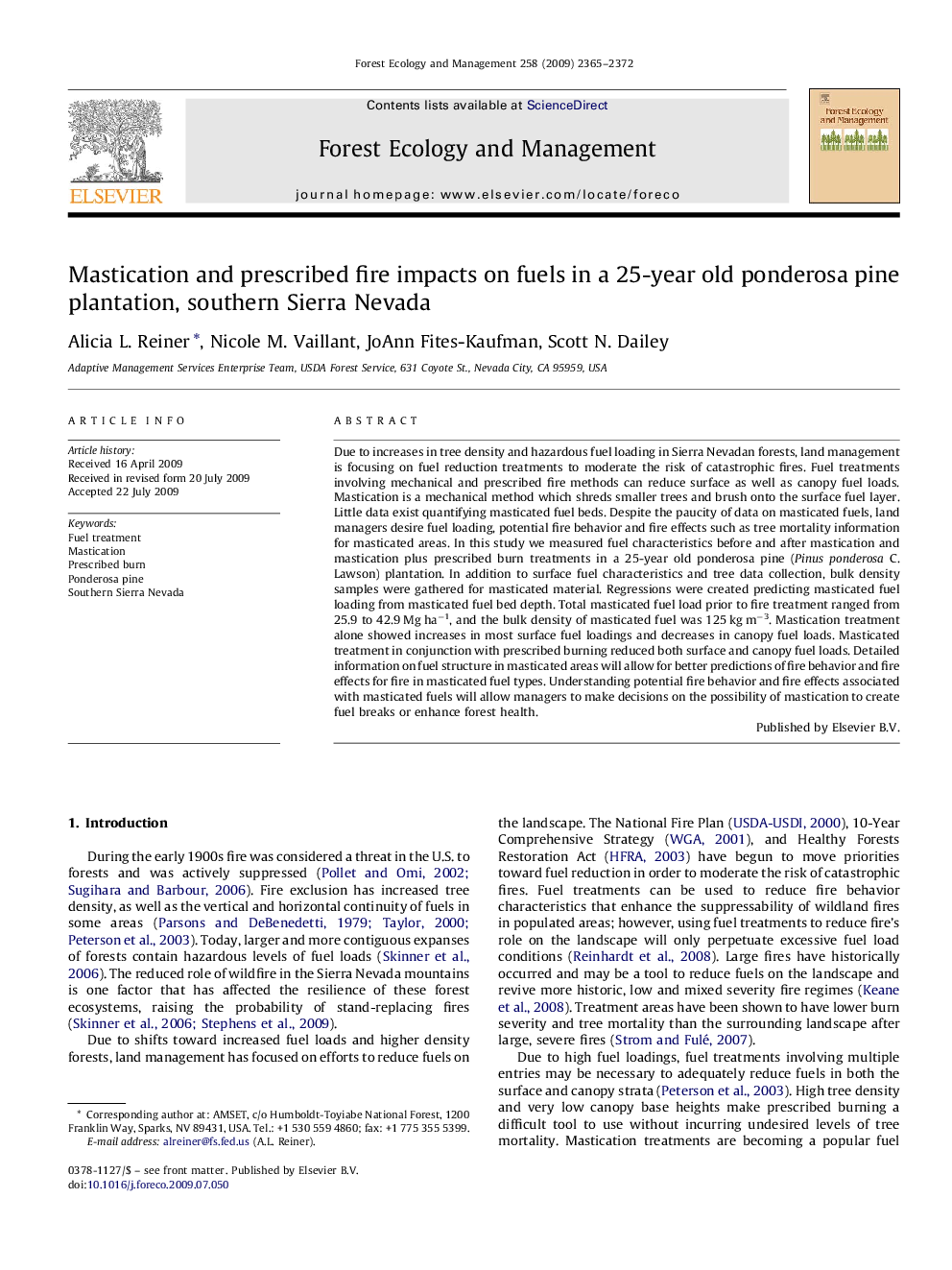| کد مقاله | کد نشریه | سال انتشار | مقاله انگلیسی | نسخه تمام متن |
|---|---|---|---|---|
| 88297 | 159297 | 2009 | 8 صفحه PDF | دانلود رایگان |

Due to increases in tree density and hazardous fuel loading in Sierra Nevadan forests, land management is focusing on fuel reduction treatments to moderate the risk of catastrophic fires. Fuel treatments involving mechanical and prescribed fire methods can reduce surface as well as canopy fuel loads. Mastication is a mechanical method which shreds smaller trees and brush onto the surface fuel layer. Little data exist quantifying masticated fuel beds. Despite the paucity of data on masticated fuels, land managers desire fuel loading, potential fire behavior and fire effects such as tree mortality information for masticated areas. In this study we measured fuel characteristics before and after mastication and mastication plus prescribed burn treatments in a 25-year old ponderosa pine (Pinus ponderosa C. Lawson) plantation. In addition to surface fuel characteristics and tree data collection, bulk density samples were gathered for masticated material. Regressions were created predicting masticated fuel loading from masticated fuel bed depth. Total masticated fuel load prior to fire treatment ranged from 25.9 to 42.9 Mg ha−1, and the bulk density of masticated fuel was 125 kg m−3. Mastication treatment alone showed increases in most surface fuel loadings and decreases in canopy fuel loads. Masticated treatment in conjunction with prescribed burning reduced both surface and canopy fuel loads. Detailed information on fuel structure in masticated areas will allow for better predictions of fire behavior and fire effects for fire in masticated fuel types. Understanding potential fire behavior and fire effects associated with masticated fuels will allow managers to make decisions on the possibility of mastication to create fuel breaks or enhance forest health.
Journal: Forest Ecology and Management - Volume 258, Issue 11, 10 November 2009, Pages 2365–2372